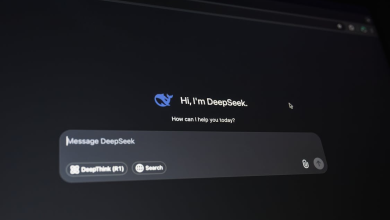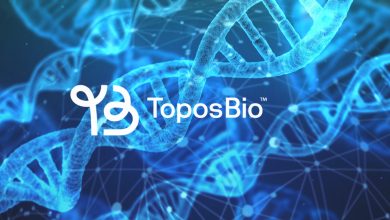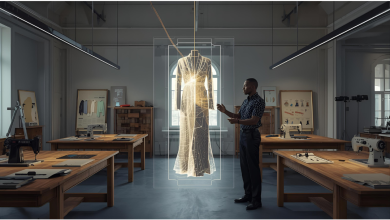
The world of AI image generation has exploded in 2025, giving creators powerful tools to bring their wildest ideas to life. Whether you’re a small business owner creating marketing materials, a content creator building your brand, or just someone who loves experimenting with digital art, finding the right AI models for image generation can transform your creative workflow.
With dozens of options available, from industry giants like Midjourney to emerging platforms, choosing the perfect tool feels overwhelming. Some excel at photorealistic portraits, others shine with artistic styles, and many struggle with specific details like hands or text. The key is understanding which AI models work best for your specific needs and budget.
Key points covered in this guide:
- Top-performing AI models for different image styles and use cases
- How professional API platforms like GPT Proto provide better access to AI models
- Pricing comparison and free alternatives for budget-conscious creators
- Real-world performance testing and quality comparisons
- Tips for getting better results from any AI image generator
Why Professional AI Gateways Like GPT Proto Are Changing the Game
Before diving into specific AI models, it’s worth highlighting how professional AI gateway platforms are revolutionizing access to image generation tools. GPT Proto represents the next evolution in AI accessibility, offering a unified API that connects you to multiple best AI models for image generation through a single, stable platform.
Unlike dealing with individual AI services that might have downtime, rate limits, or inconsistent pricing, GPT Proto provides:
- Stability That Actually Works: No more waiting in Discord queues or dealing with server overloads during peak hours. GPT Proto maintains consistent uptime across all connected AI models.
- Cost Efficiency: Instead of subscribing to multiple services, you pay as you go with transparent pricing that’s often 40-60% cheaper than direct subscriptions to individual platforms.
- Speed Optimization: Their infrastructure is built for speed, with response times that consistently outperform direct API calls to most AI image generators.
- Multiple Models, One Interface: Access Stable Diffusion, DALL-E variants, Midjourney-style models, and emerging generators through a single API endpoint.
For businesses and serious creators, this approach eliminates the technical headaches of managing multiple API keys, billing systems, and integration challenges. You focus on creating; GPT Proto handles the infrastructure.
Top-Performing AI Models for Image Generation in 2025
Midjourney – The Creative Powerhouse
Midjourney remains the gold standard for artistic and stylized image generation. This AI model excels at creating images with dramatic lighting, unique compositions, and artistic flair that feels genuinely creative rather than mechanical.
- Best for: Concept art, marketing visuals, social media content
- Strengths: Exceptional artistic interpretation, consistent quality, great community
- Weaknesses: No direct API access, Discord-only interface, limited control
The platform’s approach to prompting rewards creativity over precision. While other best AI models for image generation focus on literal interpretation, Midjourney adds artistic interpretation that often exceeds expectations.
DALL-E 3 – The Precision Master
OpenAI’s DALL-E 3 leads in following detailed prompts accurately. When you need an image that matches your exact specifications, this AI model delivers with impressive consistency.
- Best for: Product mockups, technical illustrations, specific scene creation
- Strengths: Excellent prompt following, integrated with ChatGPT, ethical guidelines
- Weaknesses: Conservative outputs, limited artistic creativity, subscription required
DALL-E 3’s integration with ChatGPT Plus makes it incredibly accessible for users already in the OpenAI ecosystem, though API access requires separate billing.
Stable Diffusion – The Customization King
As an open-source foundation, Stable Diffusion powers countless custom implementations and specialized models. This flexibility makes it a favorite among developers and users who want complete control over their AI image generation process.
- Best for: Custom implementations, batch processing, specialized styles
- Strengths: Open source, highly customizable, no usage restrictions
- Weaknesses: Requires technical setup, inconsistent results without fine-tuning
The model’s open nature has spawned hundreds of specialized variants, each optimized for specific image types or artistic styles.
Ideogram AI – The Text Master
Ideogram AI has carved out a unique position by excelling at generating images with readable text – something most AI models struggle with. This capability makes it invaluable for creating logos, posters, and marketing materials.
- Best for: Text-heavy designs, logos, educational content
- Strengths: Excellent text rendering, good typography, user-friendly interface
- Weaknesses: Limited artistic styles, newer platform with smaller community
For creators who need AI models for image generation that can handle text elements reliably, Ideogram AI represents a significant breakthrough in capability.
Emerging AI Models Worth Watching
Flux AI – The Privacy Champion
Flux AI has gained attention for its strong privacy stance and impressive image quality. Unlike platforms where your creations might be used for training, Flux AI ensures your generated images remain completely private.
- Best for: Commercial projects, sensitive content, privacy-conscious users
- Strengths: Strong privacy protection, high-quality outputs, reasonable pricing
- Weaknesses: Smaller community, fewer advanced features
Leonardo AI – The Business-Friendly Option
Leonardo AI strikes an excellent balance between quality and accessibility, offering generous free tiers alongside professional features that scale with business needs.
- Best for: Small businesses, content creators, team collaboration
- Strengths: Generous free plan, business-friendly licensing, good community features
- Weaknesses: Can be inconsistent with complex prompts, interface learning curve
How to Choose the Right AI Models for Your Needs
Selecting the best AI models for image generation depends on your specific requirements, budget, and technical comfort level.
- For Marketing and Business Use: Prioritize models with clear commercial licensing and consistent quality. DALL-E 3, Adobe Firefly, and Leonardo AI offer reliable business-friendly options.
- For Artistic Projects: Midjourney and specialized Stable Diffusion models provide the creative freedom and unique aesthetic many artists seek.
- For Technical Applications: Consider API accessibility and integration capabilities. Platforms like GPT Proto can provide access to multiple models through a single, stable interface.
- For Budget-Conscious Users: Start with free tiers from Leonardo AI, Stable Diffusion implementations, or explore pay-per-use models through API gateways.
Getting Better Results From Any AI Image Generator
Regardless of which AI models for image generation you choose, certain strategies consistently improve output quality:
- Structure Your Prompts: Use the format “Style + Subject + Background + Mood” for more predictable results.
- Iterate Systematically: Make one change at a time to understand how each adjustment affects the output.
- Learn Model-Specific Strengths: Each AI model responds differently to prompting styles and keywords.
- Use Negative Prompts: Specify what you don’t want to see, especially for hands, faces, or text elements.
- Consider Aspect Ratios: Different models perform better with specific image dimensions.
Conclusion
The landscape of best AI models for image generation continues evolving rapidly, with new capabilities and improvements arriving monthly. While established players like Midjourney and DALL-E 3 maintain strong positions, emerging platforms and professional gateways like GPT Proto are reshaping how creators access and utilize these powerful tools.
The key to success isn’t necessarily finding the single “best” AI model, but rather understanding which models work best for your specific use cases, budget, and workflow requirements. Whether you’re creating marketing materials, exploring artistic expression, or building commercial applications, the current generation of AI image generators offers unprecedented creative possibilities.
As these tools become more sophisticated and accessible, the barrier between imagination and visual reality continues to shrink. The best AI models for image generation in 2025 aren’t just tools – they’re creative partners that can help bring your wildest ideas to life with just a few carefully crafted words.




